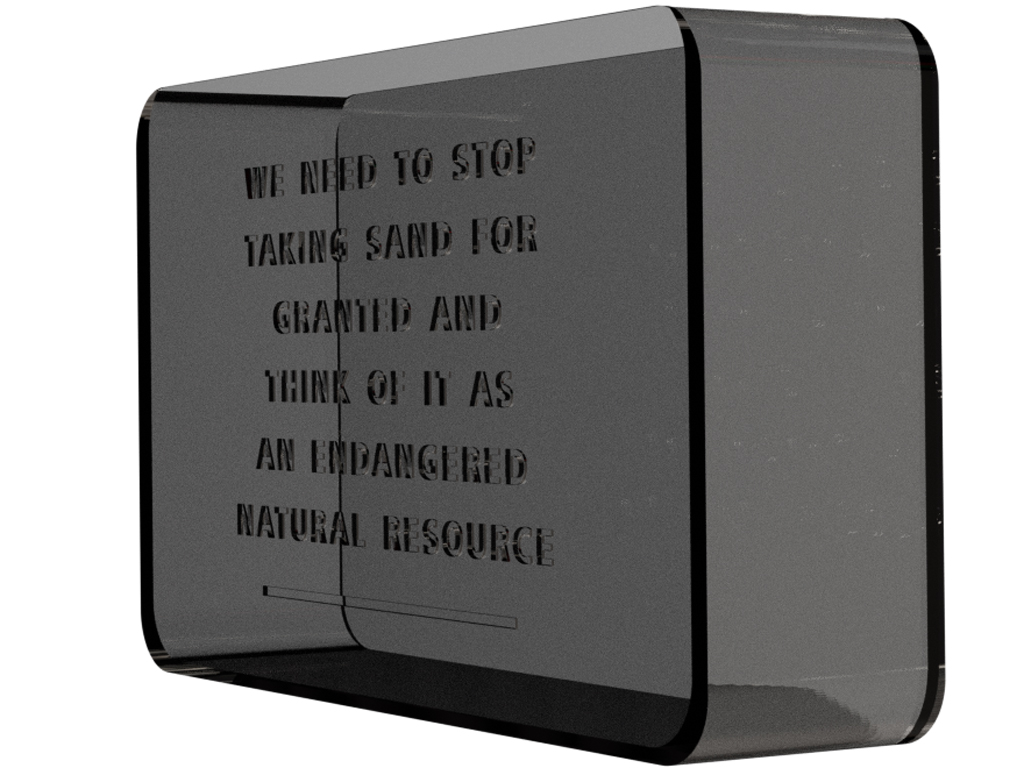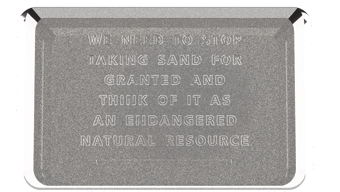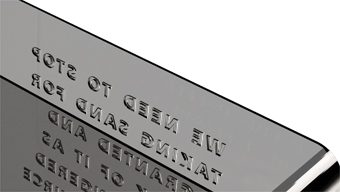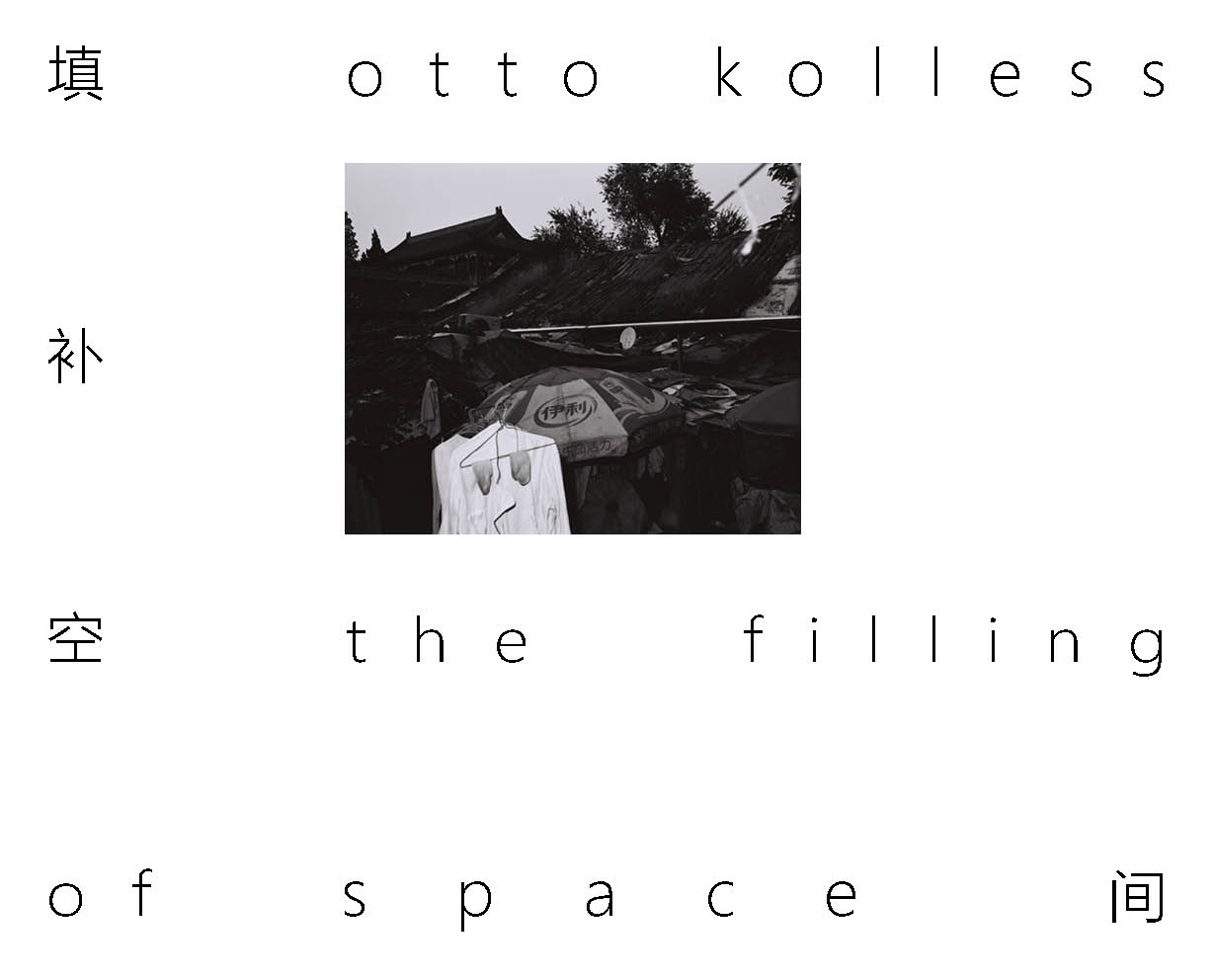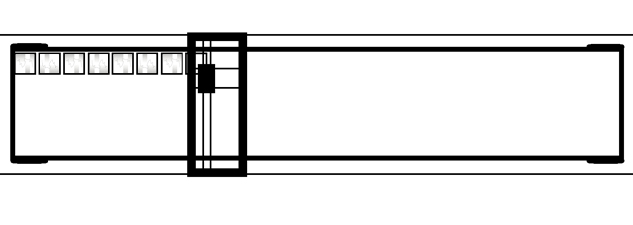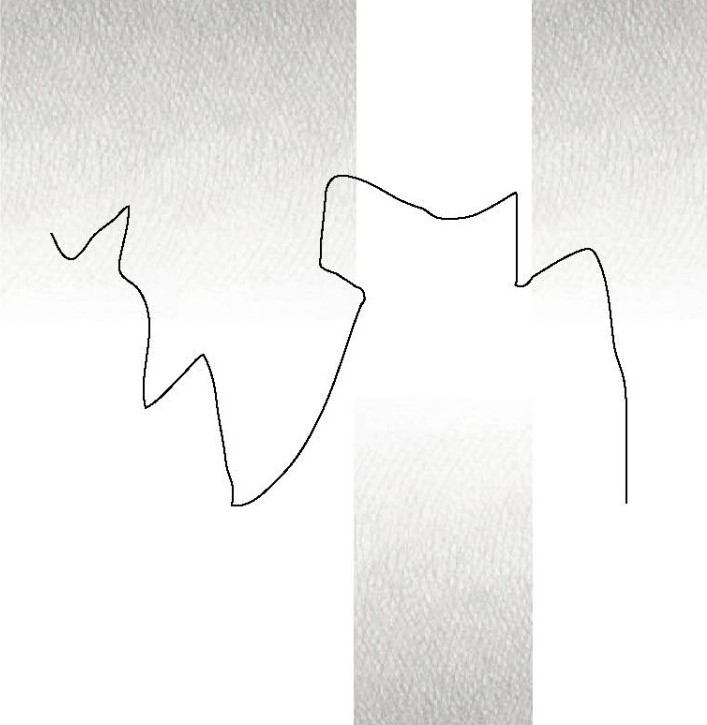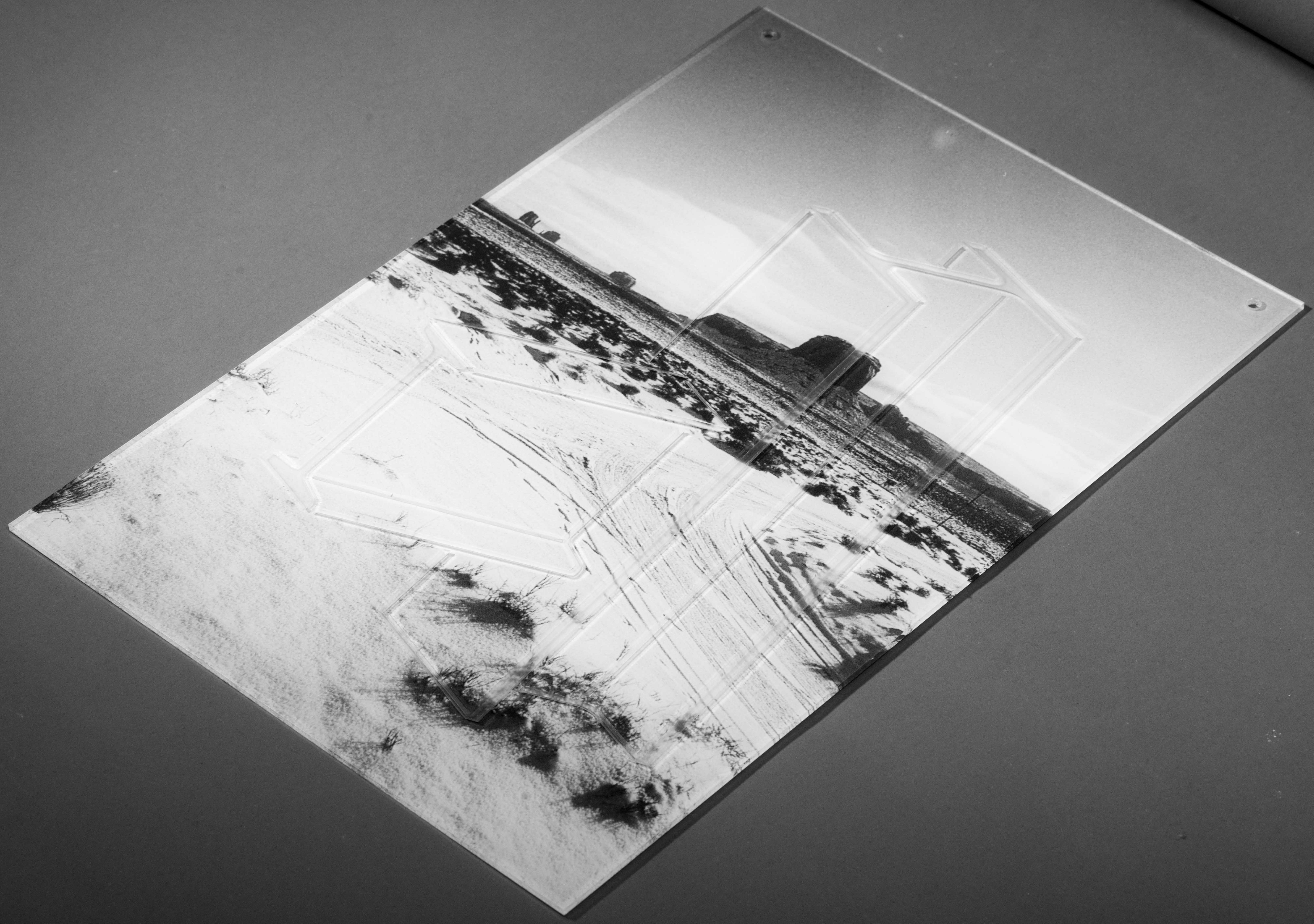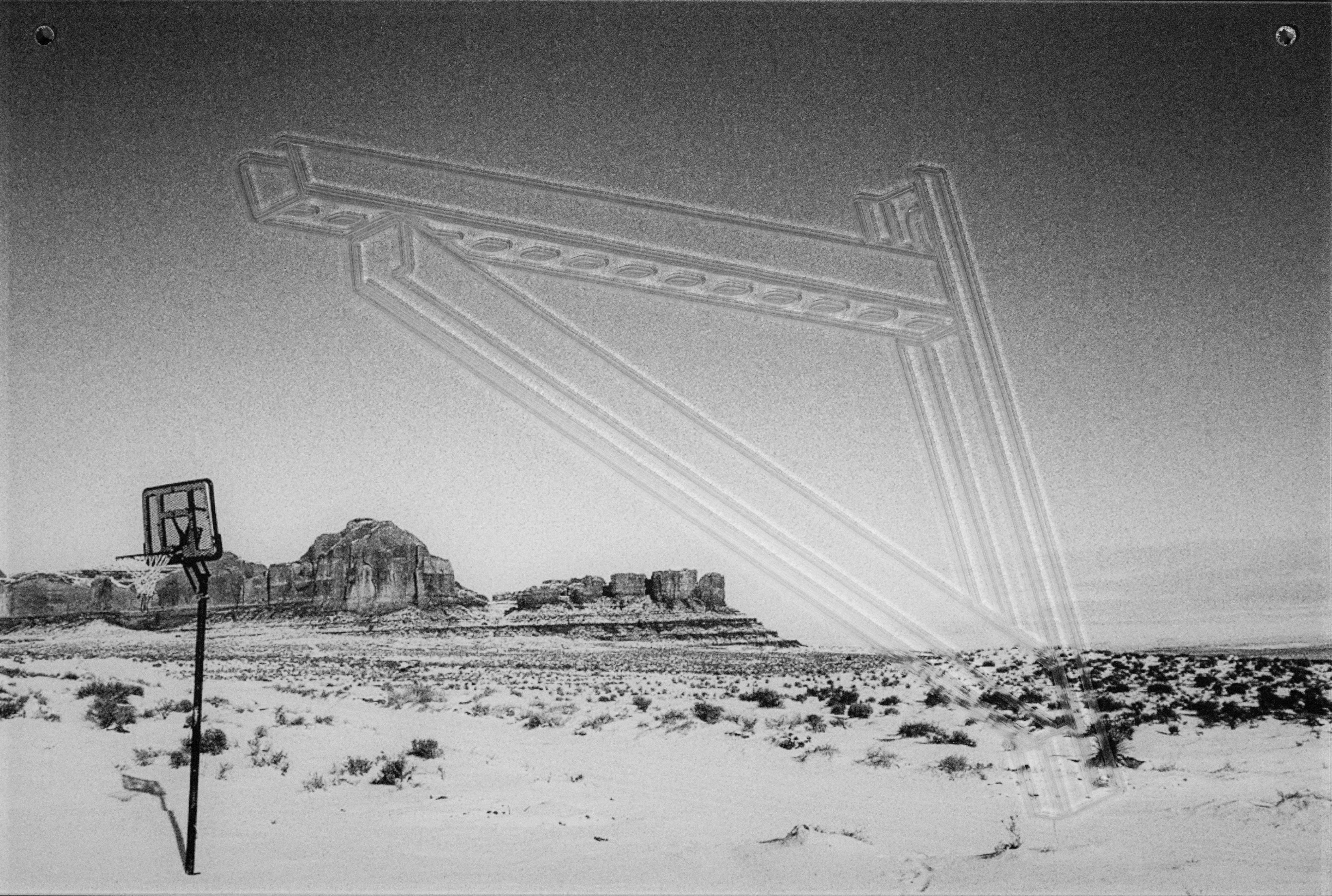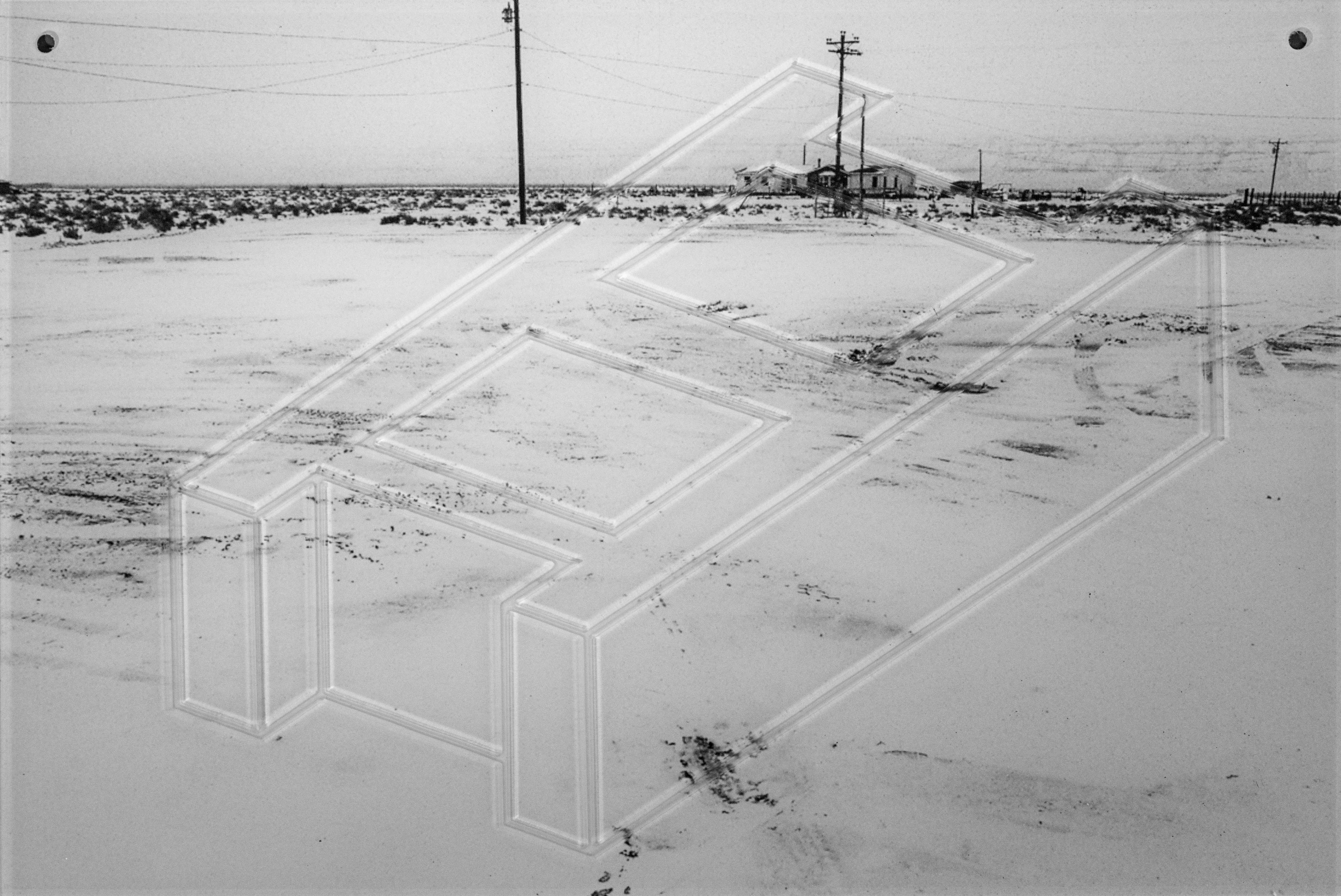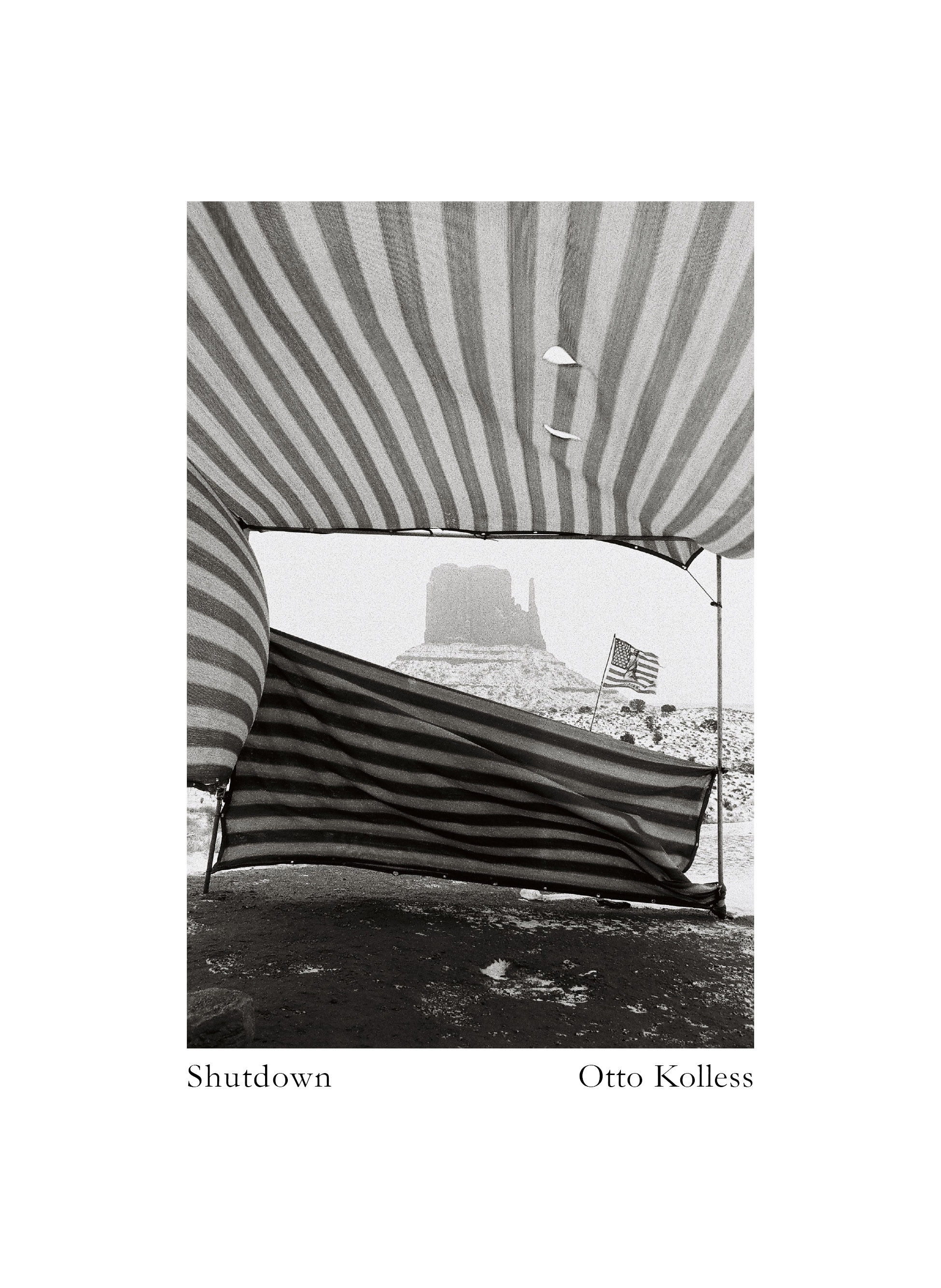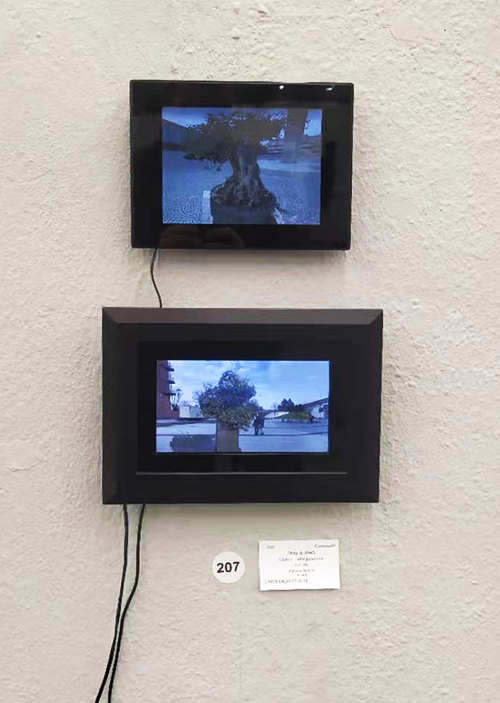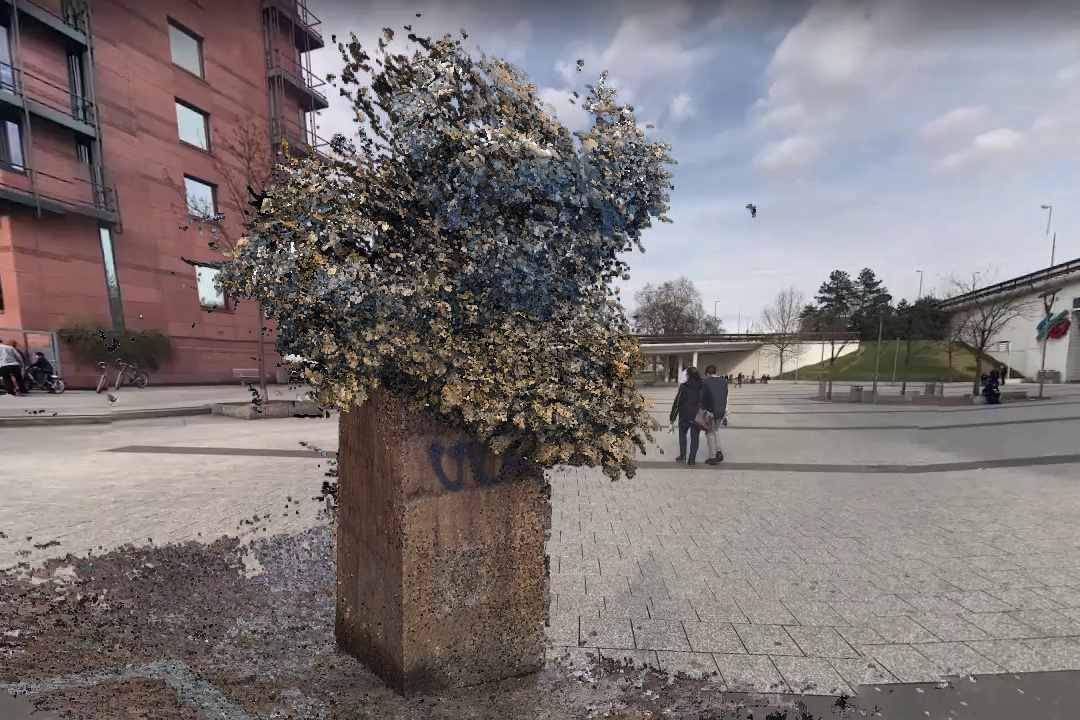Peak Sand Computer rendering
2020
Peak Sand is the theorized point in time when the maximum rate of exploitation of sand is reached, after which it is expected to enter terminal decline. Sand is a crucial component of concrete, a material dependency which is increasing every year. As only a specific kind of sand grain can be used, it has initiated a system of exploitation in third world countries where a niche for illegal extraction methods has been devised. The ongoing project Peak Sand consists of a computer rendering that shows a glass vessel open at the top with an engraving on the inside that reads “We need to stop taking sand for granted and think of it as an endangered natural resource”. The glass vessel functions as a cast, created as a proposal for a collaboration with the company bioMASON that has developed a microorganism to grow biocement. By giving the microorganism a cast to grow a future monument is created. Once grown to completion, the concrete resembles a stone table of the past. The engraved lettering is raised in the concrete, making the statement set in a time lasting material transitioning fully from a conceptual computer animation to a physical object. The future monument Peak Sand is the first in a series of works with similar compositions. Applying both a familiar architectural design language and materiality as well as a cultural understanding of the function of stone tables. The future monument Peak Sand is a comment and critique of capitalist structures that disregards fair mining methods that are safe for human kind and the environment.
the filling of space 26.5 x 21 cm
Print on photocopy paper
2018
The filling of space outlines the development of Chinese cities documented through black and white analog photography. This project is an attempt to capture the social impact of rapid modernization of mega cities. The perspective adopted to visually address these urban developments reveals the unforgiving nature of expanding cities structured upon dehumanized ethics, and dispensable and oppressed human labor. These unfinished construction sites from winter 2017 depict spaces in transition showing “humanless” sites that will soon be integrated into the cityscape.
ConceptInstallation
2020
This project aims to generate a tangible visualization of the frame of mind of users on Twitter and juxtaposes the result with news events on a global scale. This project reflects on the importance that social media has in any political debate and how the medium itself is creating and empowering political movements. Based on the BERT language model the sentiment of the Twitter posts is being monitored and analyzed. The findings are being drawn onto a roll of paper that has space for 6 months, after that period the roll will turn to make more space for the coming drawings. The archival motive of the fully automated machine creates an opportunity for the viewer to reflect on political developments and how they develop, as the last 6 months are displayed in front of them.
Gardens of LudwigshafenVideo Installation
2020
The work Garden of Ludwigshafen places digital scans of Trees from the wealthy Heidelberg area in the concrete city scene of "working class" Ludwigshafen. Through this digital exchange, regional borders are overcome and equality in life quality is created in a virtual space.
The tree -and the missing of it- in the artwork functions as a symbol for life and offers the viewer an opportunity to reflect historically grown differences.
This work was part of the group exhibition Coronale at Mannheimer Kunstverein 2020.
